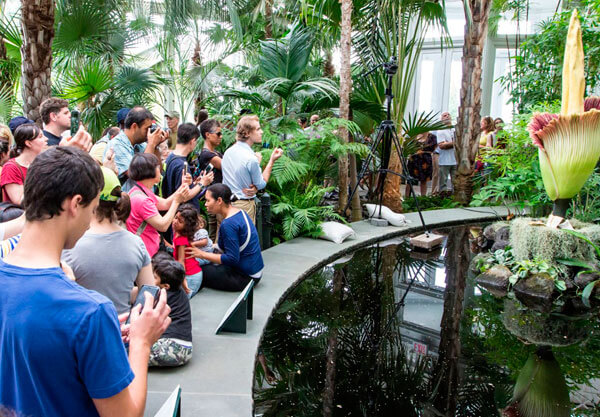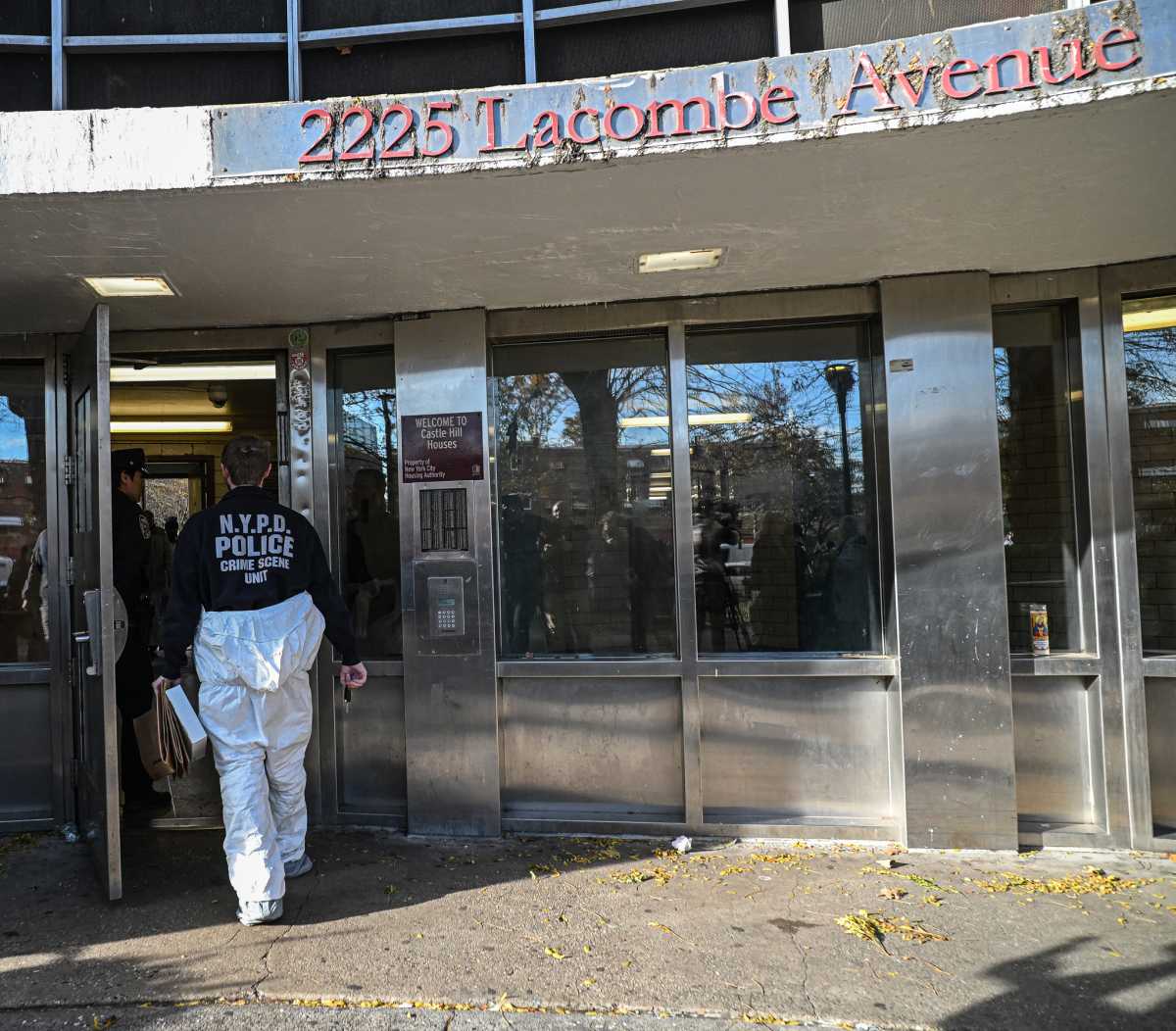A rare and malodorous marvel is drawing crowds — and wrinkled noses — to the New York Botanical Garden this week, as the infamous corpse flower reveals its massive bloom just in time for Halloween.
The Amorphophallus titanum, known for both its towering size and its pungent odor, began unfurling Wednesday in the Bronx garden’s Enid A. Haupt Conservatory, filling the air with a scent often compared to rotting meat. But the foul aroma, and beautiful bloom is fleeting, lasting just 24 to 36 hours, but that hasn’t stopped visitors from flocking to see — and smell — the spectacle before it fades.
The plant’s notorious stench isn’t just for show. It mimics the smell of decomposition to attract pollinators that feed on dead animals, which in turn help the species reproduce. The plant’s deep color almost looks like meat, and during the bloom it heats up to around the temperature of a human, further convincing pollinators that the flower is actually a corpse, making it one of nature’s most macabre masterpieces.
Native to the rainforests of Sumatra, Indonesia, the corpse flower is huge. In the wild, it can reach heights of up to 12 feet, although it typically grows between 6 and 8 feet when cultivated by skilled gardeners.
It takes seven years for the plant to store enough energy to bloom for the first time, but after that the process accelerates. When the flower is ready to bloom, it grows rapidly — four to six inches a day until it blooms.
Because each bloom is unpredictable and short-lived, horticulturists never know exactly when the spectacle will occur. Previous corpse flowers at NYBG have blossomed in June, July and August. The timing of this year’s bloom, coinciding with Halloween, is a fitting season for the fleshy floral.
The NYBG has a long history with the species. It cultivated the first corpse flowers in the Western Hemisphere that bloomed there in 1937 and 1939. The events were so popular that then-Borough President James J. Lyons even named Amorphophallus titanum the official flower of the Bronx, a designation it maintained until the 2000s.
Nearly eight decades passed before another bloom in 2016, when more than 25,000 visitors came to witness the event in person and nearly two million followed along on a live video feed.
The flower is on display at the garden now, but those who fear its putrid smell can watch the flower blooming on a livestream on the NYBG website. The garden encourages visitors to see the flower while they can because like a ghost, it will vanish soon.
Reach Sadie Brown at sbrown@schnepsmedia.com or (214) 994-6723. For more coverage, subscribe to our newsletter and follow us on Twitter, Facebook and Instagram!



























